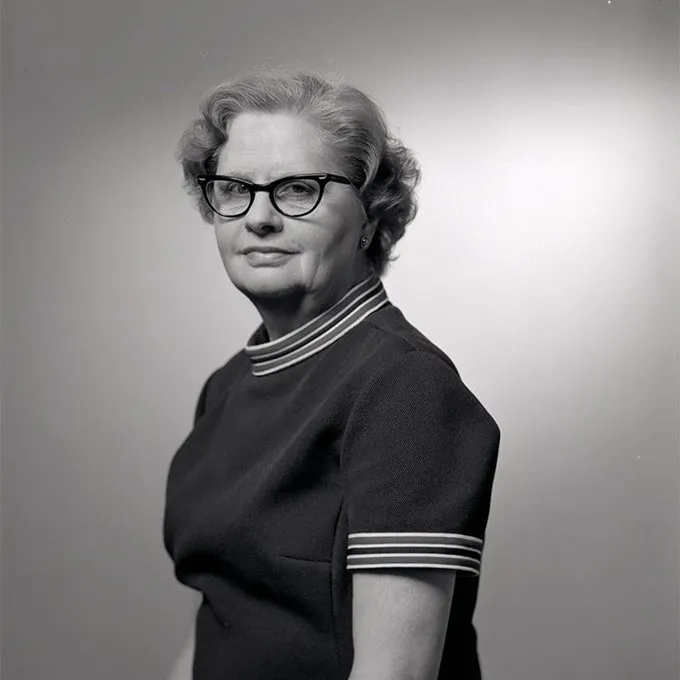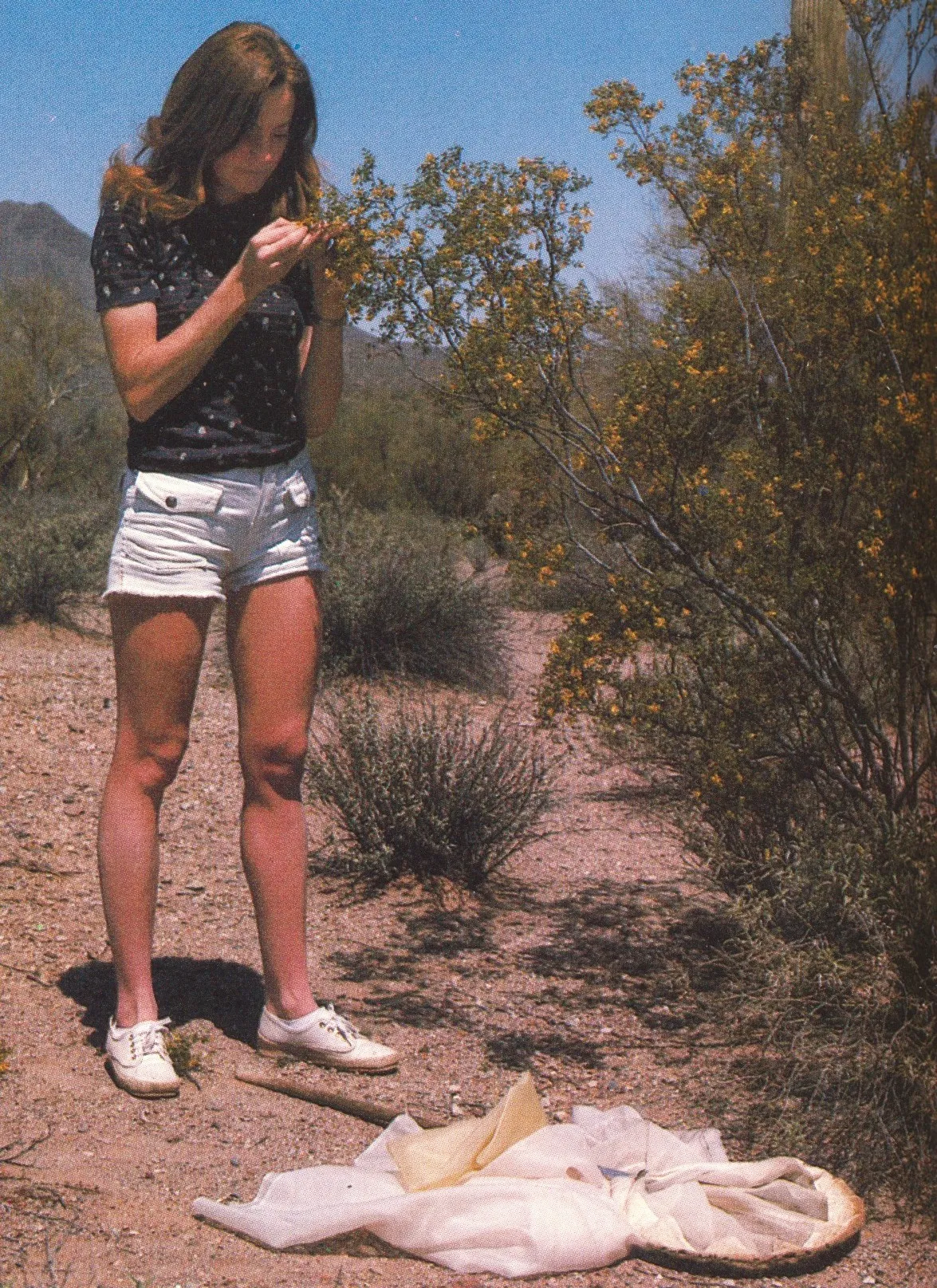Image


Historically, botany has been one of the few attainable fields in science for women, most commonly in the areas of scientific illustration and field collection (assisting male botanists who oftentimes were their husbands). The twentieth century saw more women in the sciences including botany, with increasing numbers in curator and researcher positions despite being challenging to attain.

Searching for “women in botany” is bound to yield a number of web pages on Mary Agnes Chase. Known for her work on the grasses at the United States National Herbarium (USNH), she did not start her career there, nor was she actually employed by the Smithsonian Institution. This agrostologist (and suffragist) started her botany career at the United States Department of Agriculture as a Scientific Illustrator and worked her way up to Assistant Botanist. Her 1922 book, “The First Book of Grasses: The Structure of Grasses Explained for Beginners” was used to teach botany students in Latin America for years. She worked at the USNH as an Honorary Custodian of the Grasses (not a curator) from 1936 until her death in 1963. She became an Honorary Fellow of the Smithsonian Institution in 1959 at the age of 90.
Less information, however, is available about other notable women of the United States National Herbarium and their careers.
Tillie E. Hollis Berger was a Museum Technician and plant mounter (1935-1977). She is acknowledged in the 1945-1946 Report on the Progress and Condition of the US National Museum for her contribution of 5000 mounted plants added to the herbarium collections.

Velva E. Rudd, a specialist in tropical Leguminosae, began her career in the Botany Department as a technician (1948-1973). She was later promoted to Assistant Curator and eventually to Curator. Her extensive work on legume taxonomy is exemplified in a six-part monograph in Contributions from the United States National Herbarium (1955-1968). The Mexican legume genus, Ruddia, was named in her honor.
Kittie F. Parker, a Professor of Botany at George Washington University, became a Research Associate at the USNH (1959-1989) who worked on Mexican and South American Asteraceae as well as weeds of the southwestern United States. Her comprehensive 1972 book, “An illustrated guide to Arizona weeds” is widely available.

Marie-Hélène Sachet, Associate Curator (1968-1986), is known for her work on the botany and ecology of Pacific coral islands. She initially joined the Smithsonian as a special advisor in tropical botany. Her research is exhibited in the 1975 publication, “Flora of the Marquesas, 1: Ericaceae-Convolvulacae.” Smithsonian Contributions to Botany 23: 1-34. Abutilon sachetianum, a rare tree from the Marquesas Islands, was named after her.
The 1970s were an era of change for women in the work-force, and the establishment of the Smithsonian Institution Women's Council in 1972 helped lead that change for women at the Smithsonian. The following decades saw women joining the staff of the Botany Department as curators.

Beryl B. Simpson, Associate Curator (1972-1978), worked on the phylogenetics and biogeography of American Southwest, Mexican, and Central and South American Compositae. She has been commended for her 1975 publication, “Pleistocene changes in the flora of the high tropical Andes.” Paleobiology 1: 273-294. She is the recipient of the Asa Gray Award (2003) and the José Cuatrecasas Medal for Excellence in Tropical Botany (2010).
Joan W. Nowicke, Curator (1972-1999), was a palynologist who specialized in pollen morphology and its relation to systematics. She gained international recognition in the 1980s for her work on the bizarre “Yellow Rain” of Southeast Asia, “Yellow rain — a palynological analysis.” Nature 309: 205–206 (1984).

Maria A. Faust, Associate Curator (1987-2010), was a microbiologist who specialized in tropical marine dinoflagellate taxonomy and ecology. She began her career at the Smithsonian Radiology Laboratory in 1970 moving to the Botany Department in 1987. Her most notable publication is “Identifying Harmful Marine Dinoflagellates.” Contributions from the United States National Herbarium 42: 1-144 (2002).

Vicki A. Funk, Curator and Senior Research Botanist (1981-2019), was an expert on the taxonomy and biogeography of the Compositae; her career and legacy is larger than life. Her groundbreaking book, “Systematics, Evolution, and Biogeography of the Compositae” (2009), is the authoritative reference for this plant family. In 2018 she was awarded the Asa Gray Lifetime Achievement Award, and in 2019 was presented with the Linnean Medal. Her work and passion continues to influence students and colleagues. The species Xenophyllum funkianum J.Calvo from the Ecuadorian Andes is just one species named in her honor.
Jeanine L. Olsen, Associate Curator (1989-1990), was hired as a marine algal researcher. Her tenure at NMNH was brief before she accepted a professor position at the University of Groningen, The Netherlands.
Elizabeth A. Zimmer, Curator and Research Botanist (1990-present), studies the patterns and processes of molecular evolution of green plants, in particular, among lineages of early flowering plants. She is the co-recipient of the 2018 Richard and Minnie Windler Award in Systematics for the publication, “A whole chloroplast genome phylogeny of diploid species of Isoetes (Isoetaceae, Lycopodiophyta) in the southeastern United States.” Castanea 83: 224-235 (2018).
Paula T. DePriest, Associate Curator (1991-2004), studied the systematics and phylogeny of lichen-forming fungi in the southern Appalachians and the southeastern United States. She also researched the formation and origins of lichen-algal symbiosis. She currently is the Deputy Director of the Smithsonian’s Museum Conservation Institute.
Jun Wen, Curator and Research Botanist (2005-present), works on the systematics, biogeography and ethnobotany of the Araliaceae and the Vitaceae. Her studies center on understanding the taxonomy, patterns, and processes of diversification of disjunct plant groups. This work is best represented in the 1999 paper, “Evolution of eastern Asian and eastern North American disjunct distributions in flowering plants.” Annual Review of Ecology and Systematics 30: 421-455.
Ashley N. Egan, Assistant Curator (2013-2017), worked on the biodiversity of legumes and their wild relatives through evolutionary genetics and genomics. Her research is highlighted in the 2016 publication, “Parsing polyphyletic Pueraria: Delimiting distinct evolutionary lineages through phylogeny.” Molecular Phylogenetics and Evolution 104: 44-56.
Searching for information about the women of the USNH and their work has been difficult since not all have an extensive web presence. Responsive to the gender gap in Wikipedia, Dr. Vicki Funk, as advisor to the American Women’s History Initiative, helped create the Funk List, a list of over 125 names of Smithsonian women in science who have not been fully recognized in Wikipedia.
Created to highlight the importance of recovering the stories and contributions of women in science, the Funk List has grown to over 400 names with the work of Dr. Elizabeth Harmon, digital curator at the SI Archives. This growth and awareness led to the June 2020 web-based Wikipedia edit-a-thon to edit pages for women in science, including women’s biographies, women's works, and women's issues. Another training event edit-a-thon is scheduled for March 25, 2021: Wikipedia & Women in Science: Smithsonian Groundbreakers Edit-a-thon. Work from Wikipedia’s women in science to-do list. Join and help get these stories written.